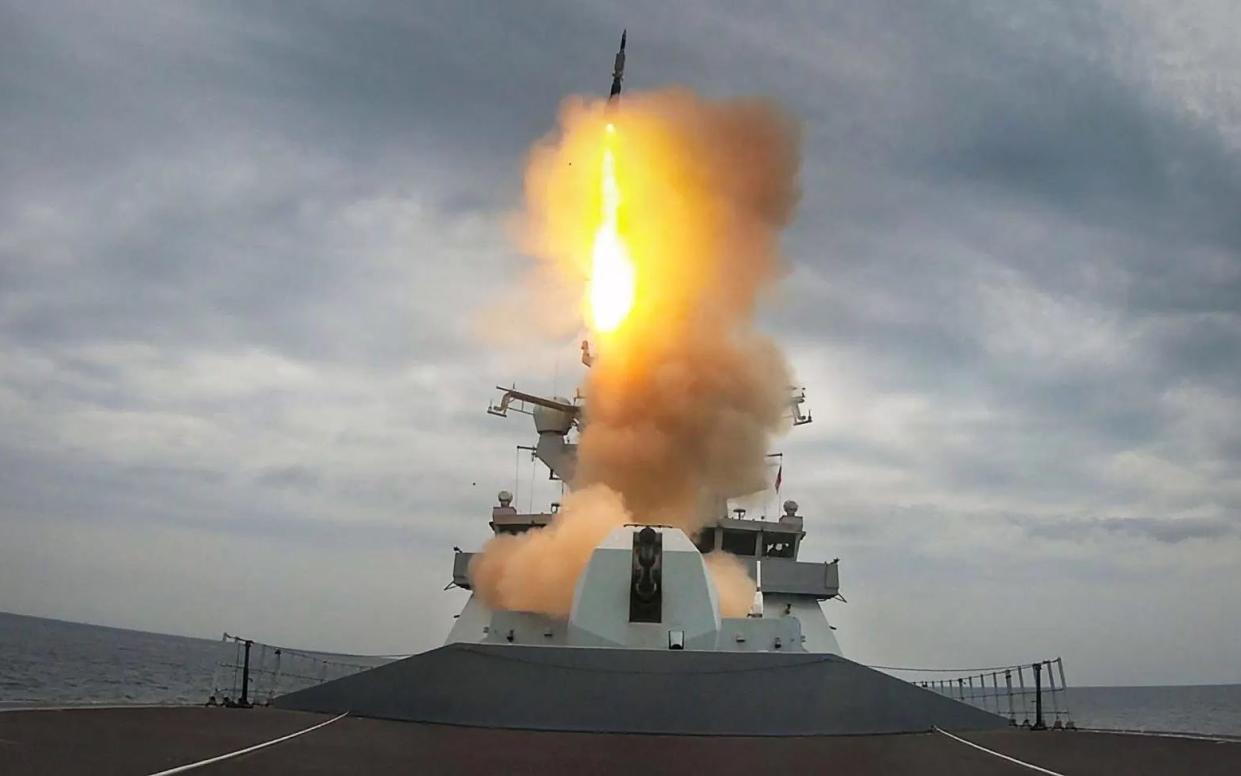HMS Diamond has just taught our enemies an important lesson. Don’t underestimate the Royal Navy

There will be a general feeling of quiet pride among serving and former Royal Navy personnel today, at the news of the Type 45 destroyer HMS Diamond shooting down a Houthi ballistic missile above the Red Sea on Wednesday.
It was an impressive performance by the ship’s company and their Sea Viper missile system, as the Type 45 is not, formally, meant to be able to engage ballistic weapons. High-tech weaponry occasionally disappoints: long ago, I was doing my Fleet training in one of the previous Type 42 destroyers as she attempted to engage much less challenging targets on a firing range. Several targets flew over us unmolested – at first the ship’s systems would not even load our missiles onto the launcher, then the missiles would not launch. The last of our allowance of targets approached, and finally a missile launched with a mighty roar. Sadly, it missed and we sailed home with our tails between our legs.
Yesterday, however, HMS Diamond’s people and her weapons delivered beyond what could have been expected. It’s an achievement in the best traditions of the Service – and the builders of the Principal Anti Air Missile System, the UK version of which is known as Sea Viper, must be feeling good too. Engineers and technicians in Britain, France, Italy and various other countries including the USA can take pride in their work.
It doesn’t take away from all these people’s achievement to note that the Houthi weapon was probably relatively basic. It may have been one of the Fateh-110 family, sometimes described as “quasi-ballistic” missiles, which travel at speeds between Mach 3 and 4. It might, however, have been the improved Zolfaghar: this weighs more than four tonnes, flies on a true ballistic trajectory and goes faster than Mach 7. If so, then hats off to HMS Diamond’s anti-air team and the PAAMS builders, as this is well beyond the threats the system was designed to face.
But there are a lot worse threats out there. China, for instance, has the DF-26 anti-ship ballistic missile. The massive DF-26 weighs 20 tonnes and can reportedly reach Mach 18. A US Navy Aegis warship equipped with SM-3 and SM-6 missiles specifically designed for anti-ballistic defence could probably cope with these, but HMS Diamond would be overmatched.
Efforts are in hand, however, to upgrade PAAMS/Sea Viper for full anti-ballistic capability, and this is to be welcomed. With ballistic missiles proliferating across the world, thanks in large part to malign actors like Iran – backer of the Houthis and other terrorist groups including Hamas in Gaza and Hezbollah in Lebanon – our forces need to be capable of defeating such threats. This is not only so that they can assist in preserving freedom of navigation in the Red Sea and Chinese waters: the UK itself may need defending from ballistic threats one day soon, as many of our allies already do.
Meanwhile we should salute the professionalism of Commander Peter Evans, commanding officer of HMS Diamond, and his ship’s company.
In the Royal Navy there is a toast traditionally given on each day of the week. Today’s toast is “a willing foe, and sea room” – the fervent desires of every officer back in the days of sail, when action was the best hope of honour and promotion.
Congratulations to HMS Diamond and her people on finding both this week.

